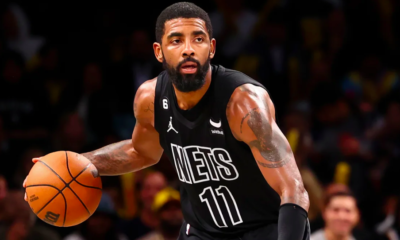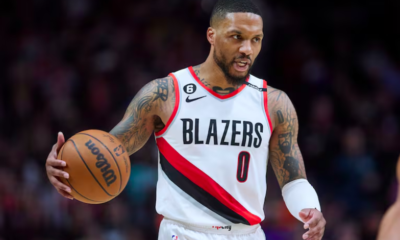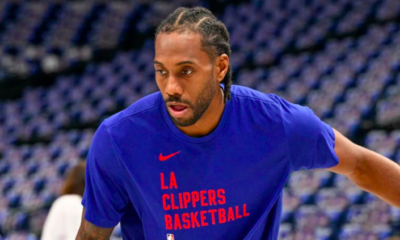Basketball
Unusual Personalities of Basketball Stars: Off-Court Eccentricities
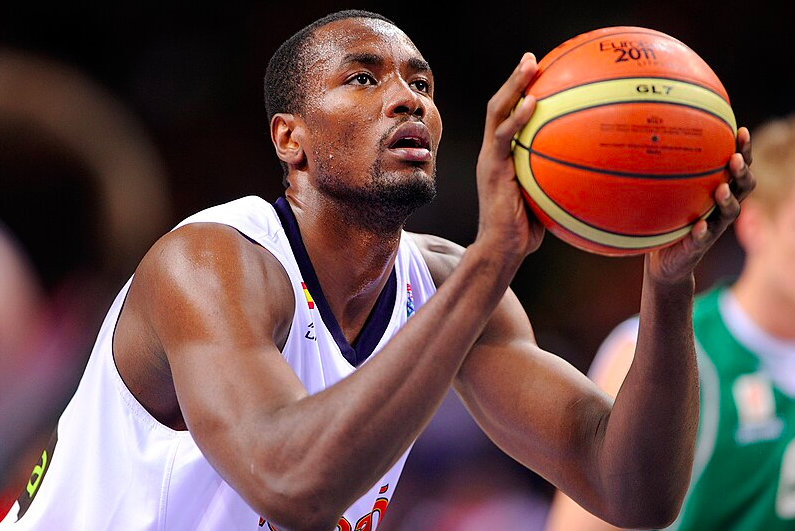
Unusual Personalities of Basketball Stars: Off-Court Eccentricities
Basketball stars are known for their extraordinary skills on the court, but what about their lives off the court? Some players have fascinating and unusual personalities that set them apart from the crowd. In this article, we’ll explore the off-court eccentricities of some of the most famous basketball stars.
1). The Introverted Genius: Kawhi Leonard
Kawhi Leonard, known for his quiet demeanor, is one of the NBA’s most enigmatic personalities. Off the court, he keeps a low profile, preferring to let his game do the talking. Despite his reserved nature, Leonard has a quirky side, often displaying a dry sense of humor in interviews and social media posts.

The Introverted Genius: Kawhi Leonard
Kawhi Leonard is not your typical NBA star. Despite his quiet demeanor off the court, he possesses a basketball IQ and skill set that are second to none. Here’s a closer look at the introverted genius:
1. Quiet Confidence: Leonard is known for his reserved nature, often letting his game do the talking. He doesn’t seek the spotlight but instead focuses on perfecting his craft and helping his team win.
2. Defensive Dominance: Leonard’s defensive prowess is legendary. His ability to lock down the opposing team’s best player has earned him multiple Defensive Player of the Year awards.
3. Offensive Versatility: While defense is his calling card, Leonard is also a potent offensive threat. His scoring ability, especially in clutch moments, has earned him the nickname “The Klaw.”
4. Basketball IQ: Leonard’s understanding of the game is exceptional. He reads plays well, anticipates opponents’ moves, and makes high basketball IQ decisions on the court.
5. Work Ethic: Despite his natural talent, Leonard is known for his relentless work ethic. He puts in the hours in the gym, constantly working to improve his game and add new elements to his skill set.
6. Humble Demeanor: Despite his many accomplishments, Leonard remains humble and grounded. He shies away from the spotlight and lets his game speak for itself.
7. Team Player: Leonard is not just a solo act. He values teamwork and is known for his unselfish play, often making the extra pass to set up his teammates for success.
8. Clutch Performer: When the game is on the line, Leonard is at his best. His ability to deliver in crunch time has led to some memorable moments and clutch shots throughout his career.
9. Leadership by Example: While not a vocal leader, Leonard leads by example. His work ethic, dedication, and performance on the court set the standard for his teammates.
10. Legacy: Leonard’s impact on the game goes beyond his individual accolades. He has inspired a new generation of players with his quiet excellence and has left a lasting legacy in the NBA.
2). The Fashion Icon: Russell Westbrook
Russell Westbrook is not only known for his dynamic playing style but also for his bold fashion choices. Off the court, Westbrook is a trendsetter, often seen sporting avant-garde outfits that turn heads. His unique sense of style has earned him a reputation as one of the NBA’s most stylish players.

The Fashion Icon: Russell Westbrook
Russell Westbrook is not only a star on the basketball court but also a fashion icon off it. His bold and daring fashion choices have garnered as much attention as his electrifying play. Here’s a closer look at Westbrook’s unique sense of style:
1. Bold Statements: Westbrook is known for pushing the boundaries of fashion with his bold and daring outfits. Whether it’s bright colors, bold patterns, or unique accessories, he always makes a statement.
2. Trendsetter: Westbrook is not afraid to take risks with his fashion. He often sets trends and pushes the envelope with his innovative and cutting-edge looks.
3. Versatility: Westbrook’s fashion sense is versatile, ranging from sleek and sophisticated suits to casual and edgy streetwear. He can effortlessly switch between different styles, always staying true to his unique aesthetic.
4. Attention to Detail: One of Westbrook’s trademarks is his attention to detail. He pays meticulous attention to every aspect of his outfit, from the accessories to the shoes, ensuring that every element complements the overall look.
5. Confidence: Perhaps the most important aspect of Westbrook’s fashion sense is his confidence. He wears each outfit with swagger and poise, owning the look and making it his own.
6. Influence: Westbrook’s influence extends beyond the basketball court. He has become a fashion icon, inspiring others to embrace their own sense of style and take risks with their fashion choices.
7. Collaboration: Westbrook has collaborated with several fashion brands and designers, creating his own lines of clothing and accessories. His collaborations often reflect his bold and innovative style.
8. Impact: Westbrook’s impact on the fashion world has been significant. He has challenged traditional notions of style and beauty, inspiring a new generation of fashion enthusiasts to think outside the box.
9. Expression: For Westbrook, fashion is a form of self-expression. He uses his clothing choices to express his personality, creativity, and individuality, showing that fashion can be fun, fearless, and empowering.
10. Legacy: Westbrook’s influence on fashion is undeniable. He has redefined what it means to be a fashion icon, showing that style is not just about what you wear but how you wear it.
3). The Philosopher: Kyrie Irving
Kyrie Irving is not your typical basketball star. Off the court, Irving is known for his intellectual curiosity and philosophical musings. He has expressed unconventional views on topics ranging from science to spirituality, often sparking controversy and debate among fans and media.
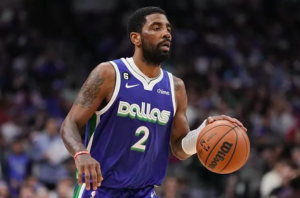
The Philosopher: Kyrie Irving
Kyrie Irving is not just a basketball player; he’s also known for his philosophical outlook on life. Here’s a deeper look into the mind of this NBA star:
1. Intellectual Curiosity: Irving is known for his intellectual curiosity and interest in exploring complex ideas. He’s often seen pondering deep questions about the nature of reality, consciousness, and the universe.
2. Flat Earth Theory: One of Irving’s most famous philosophical musings was his assertion that the Earth is flat. While he later clarified that his comments were more about encouraging people to question accepted truths, it sparked a debate about science, skepticism, and the nature of belief.
3. Seeking Truth: Irving has spoken about the importance of seeking truth and questioning conventional wisdom. He believes in the power of individual thought and encourages others to think critically about the world around them.
4. Personal Growth: Irving sees life as a journey of personal growth and self-discovery. He’s open about his own struggles and challenges, viewing them as opportunities for learning and development.
5. Spirituality: Irving’s philosophical outlook is often intertwined with his spirituality. He’s spoken about the connection between mind, body, and spirit, and how it influences his approach to basketball and life.
6. Mindfulness: Irving practices mindfulness and meditation, which he believes helps him stay focused and grounded. He sees these practices as essential for maintaining mental clarity and emotional balance.
7. Philanthropy: Irving’s philosophical beliefs extend to his philanthropic efforts. He’s involved in various charitable initiatives aimed at promoting education, equality, and social justice, reflecting his desire to make a positive impact on the world.
8. Embracing Uncertainty: Irving embraces the uncertainty of life, viewing it as an opportunity for growth and exploration. He encourages others to embrace change and see challenges as opportunities for learning and adaptation.
9. Influence on Others: Irving’s philosophical musings have influenced others to think more deeply about their own beliefs and assumptions. He’s sparked conversations about the nature of reality and our place in the universe, challenging people to think beyond the conventional.
10. Legacy: Ultimately, Irving hopes to leave a legacy of thoughtful inquiry and intellectual curiosity. He wants to inspire others to question the world around them and seek their own truths, much like he has throughout his career.
4). The Renaissance Man: LeBron James
LeBron James is more than just a basketball player—he’s a businessman, philanthropist, and activist. Off the court, James is involved in a variety of endeavors, from producing films to opening a school for at-risk youth. His diverse interests and achievements make him one of the NBA’s most multifaceted personalities.

The Renaissance Man: LeBron James
LeBron James is not just a basketball player; he’s a modern-day Renaissance man. Here’s a deeper look into the many facets of this NBA icon:
1. Basketball Savant: LeBron’s basketball skills are legendary. With multiple MVP awards and NBA championships, he’s widely regarded as one of the greatest basketball players of all time.
2. Philanthropist: Off the court, LeBron is a dedicated philanthropist. Through his LeBron James Family Foundation, he has helped thousands of at-risk children in his hometown of Akron, Ohio, by providing educational support and resources.
3. Business Mogul: LeBron is also a successful businessman. He has endorsement deals with major brands like Nike and Coca-Cola, and he owns his own production company, SpringHill Entertainment, which produces films, TV shows, and documentaries.
4. Social Activist: LeBron is outspoken on social issues. He has used his platform to speak out against racial injustice and has been a vocal advocate for social change.
5. Family Man: Despite his busy schedule, LeBron prioritizes his family. He’s a devoted husband to his wife, Savannah, and a loving father to his three children.
6. Fashion Icon: LeBron is known for his impeccable sense of style. Whether he’s on the court or on the red carpet, he always looks sharp and fashionable.
7. Mentor and Leader: LeBron is a mentor to many young players in the NBA. His leadership both on and off the court has inspired a new generation of athletes to strive for greatness.
8. Cultural Influencer: LeBron’s impact extends beyond the world of sports. He’s a cultural icon whose influence can be seen in fashion, entertainment, and even politics.
9. Role Model: LeBron is a role model to millions of people around the world. His dedication to his craft, his commitment to his community, and his unwavering values make him an inspiration to many.
10. Legacy: LeBron’s legacy is still being written, but one thing is certain: he will be remembered as more than just a basketball player. He will be remembered as a true Renaissance man, whose impact transcended sports and touched the lives of people around the world.
5). The Free Spirit: JaVale McGee
JaVale McGee is known for his playful personality and offbeat sense of humor. Off the court, McGee is a free spirit, often engaging in quirky antics and pranks. His lighthearted approach to life makes him a fan favorite and adds a touch of fun to the NBA.

The Free Spirit: JaVale McGee
JaVale McGee is not your typical NBA player. Known for his eclectic personality and offbeat interests, McGee marches to the beat of his own drum both on and off the court. Here’s a glimpse into the life of this free spirit:
1. Quirky Hobbies: McGee is known for his love of unconventional hobbies. From his passion for knitting to his interest in ancient history, he embraces activities that set him apart from his peers.
2. Philanthropy: Despite his whimsical nature, McGee is deeply committed to making a difference in the world. He is actively involved in various charitable causes, using his platform to raise awareness and support for those in need.
3. Sense of Humor: McGee’s lighthearted and humorous nature is evident both on and off the court. He often engages with fans on social media, sharing comedic moments and showing off his playful side.
4. Fashion Forward: McGee is no stranger to bold fashion choices. He is known for his eclectic sense of style, often mixing and matching patterns and colors to create eye-catching outfits.
5. Family Man: Despite his busy schedule, McGee prioritizes his family. He is a devoted father and often shares glimpses of his family life on social media, showing his fans a different side of his personality.
6. Intellectual Curiosity: McGee is known for his intellectual curiosity. He is constantly seeking out new knowledge and experiences, whether it’s through reading, traveling, or engaging in meaningful conversations.
7. Unconventional Playstyle: On the court, McGee’s playstyle is as unique as his personality. Known for his shot-blocking abilities and high-flying dunks, he brings a sense of excitement and unpredictability to the game.
8. Embracing Individuality: Through his actions and lifestyle choices, McGee encourages others to embrace their individuality. He is a strong advocate for self-expression and staying true to oneself, no matter how unconventional it may seem.
9. Positive Influence: Despite his unconventional approach to life, McGee is a positive influence on those around him. His infectious personality and upbeat attitude have earned him respect and admiration from fans, teammates, and coaches alike.
10. Legacy: McGee’s legacy extends far beyond the basketball court. He has shown that it’s okay to be different, to march to the beat of your own drum, and to embrace the things that make you unique.
6). The Gentle Giant: Boban Marjanovic
Boban Marjanovic, standing at 7’4″, is not only known for his towering height but also for his gentle and lovable personality. Off the court, Marjanovic is known for his warm demeanor and infectious smile. He often delights fans with his humorous antics and playful interactions on social media.
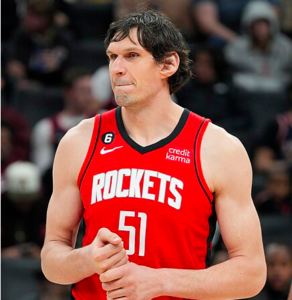
The Gentle Giant: Boban Marjanovic
Boban Marjanovic is more than just a towering presence on the basketball court; he’s also known for his gentle nature and quirky personality. Standing at 7 feet 4 inches tall, Marjanovic is one of the tallest players in NBA history. Here’s a closer look at the life of this gentle giant:
1. Larger Than Life: Marjanovic’s height is often the first thing people notice about him. His towering stature makes him a formidable presence on the court, and he uses his size to his advantage, particularly in rebounding and shot-blocking.
2. Soft-Spoken: Despite his intimidating size, Marjanovic is known for his soft-spoken and gentle demeanor. He is often seen smiling and engaging with fans, teammates, and opponents alike in a friendly manner.
3. Humble Beginnings: Marjanovic’s journey to the NBA was anything but easy. He grew up in Serbia during the Yugoslav Wars and faced many challenges on his path to basketball stardom. His humble beginnings have shaped him into the down-to-earth person he is today.
4. Multilingual: Marjanovic is fluent in several languages, including Serbian, English, and Russian. His ability to communicate with people from different backgrounds has helped him connect with fans and teammates around the world.
5. Sense of Humor: Despite his gentle nature, Marjanovic has a playful side. He is known for his sense of humor and has appeared in several humorous commercials and videos, showcasing his fun-loving personality.
6. Acting Career: Marjanovic has also dabbled in acting, appearing in a few films and TV shows. His larger-than-life presence makes him a natural on-screen, and he has earned praise for his performances.
7. Family Man: Off the court, Marjanovic is a devoted husband and father. He often shares photos and videos of his family on social media, showing his fans a glimpse into his personal life.
8. Fan Favorite: Marjanovic’s gentle giant persona has made him a fan favorite wherever he goes. His fans appreciate not only his skills on the court but also his kindness and humility off the court.
9. Team Player: Despite his individual talents, Marjanovic is known for his team-first mentality. He is always willing to do whatever it takes to help his team succeed, whether it’s scoring points, grabbing rebounds, or setting screens.
10. Legacy: Marjanovic’s legacy extends far beyond basketball. He is not only remembered for his skills on the court but also for his kind heart and gentle nature. He has shown that true strength comes from kindness and humility, making him a role model for aspiring athletes everywhere.
7). The Artistic Soul: Chris Bosh
Chris Bosh is not just a basketball player—he’s also an avid art enthusiast. Off the court, Bosh channels his creativity into various artistic pursuits, including painting and photography. His unique perspective and artistic talents make him a standout among NBA players.
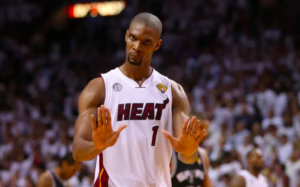
The Artistic Soul: Chris Bosh
Chris Bosh is renowned for his creativity both on and off the basketball court. Beyond his impressive basketball career, Bosh is also known for his artistic talents and unique approach to life. Here’s a closer look at the artistic soul of Chris Bosh:
1. Creative Expression: Bosh’s creativity extends beyond basketball. He is an accomplished musician, writer, and visual artist, using various forms of expression to showcase his artistic talents.
2. Musician: Bosh is a skilled musician and has a passion for playing the guitar. He often shares videos of himself playing music on social media, giving fans a glimpse into his musical talents.
3. Writer: Bosh is also a talented writer and has authored several books. He uses his writing to share his insights and experiences, offering readers a unique perspective on life and basketball.
4. Visual Artist: Bosh’s artistic talents are not limited to music and writing; he is also a talented visual artist. He creates stunning pieces of art that reflect his creativity and unique vision.
5. Philanthropy: Bosh is deeply committed to giving back to the community and uses his platform to support various charitable causes. His philanthropic efforts have made a positive impact on the lives of many people.
6. Fashion Icon: Bosh is known for his impeccable sense of style and is considered a fashion icon both on and off the court. He often pushes the boundaries of fashion, setting trends and inspiring others with his unique style.
7. Basketball Career: Despite his artistic pursuits, Bosh’s basketball career is equally impressive. He is a two-time NBA champion and an 11-time NBA All-Star, showcasing his exceptional talent and dedication to the game.
8. Inspiration: Bosh’s artistic soul serves as an inspiration to many. He shows that it’s possible to excel in multiple areas of life and encourages others to pursue their passions and express themselves creatively.
9. Legacy: Bosh’s legacy goes beyond his accomplishments on the basketball court. He is remembered for his creativity, generosity, and unique approach to life, leaving a lasting impact on the world around him.
10. Role Model: Bosh serves as a role model for aspiring artists and athletes alike. His ability to balance his athletic career with his artistic pursuits is a testament to his dedication, passion, and talent.
8). The Music Maestro: Damian Lillard
Damian Lillard, also known as Dame D.O.L.L.A, is not just a basketball star—he’s also a talented rapper. Off the court, Lillard pursues his passion for music, releasing several albums to critical acclaim. His lyrical prowess and musical talents showcase his multifaceted personality.

The Music Maestro: Damian Lillard
Damian Lillard, also known by his rap alias Dame D.O.L.L.A., is not just a basketball superstar but also a talented musician. Here’s a glimpse into the musical world of Damian Lillard:
1. Dual Talents: Damian Lillard is a rare talent who excels in both basketball and music. He has released several rap albums and singles, showcasing his skills as a lyricist and performer.
2. Passion for Music: Lillard’s love for music is evident in his dedication to his craft. Despite his demanding basketball career, he finds time to write, record, and release music that resonates with fans around the world.
3. Authenticity in Lyrics: Lillard’s lyrics often reflect his personal experiences and struggles, making his music relatable and heartfelt. He uses his platform to address social issues and inspire others through his music.
4. Music Career Highlights: Lillard’s music career has seen several highlights, including collaborations with renowned artists such as Lil Wayne and 2 Chainz. His albums have received critical acclaim and have been well-received by fans.
5. Influence in the Music Industry: Lillard’s impact extends beyond the basketball court, as he is considered a significant figure in the music industry. His music has garnered millions of streams, and he continues to grow his fan base with each release.
6. Balancing Act: Balancing a successful basketball career with a thriving music career is no easy feat, but Lillard manages to do so with grace and skill. His ability to excel in both fields is a testament to his talent and work ethic.
7. Inspiration to Others: Lillard’s journey serves as an inspiration to aspiring musicians and athletes alike. He shows that with dedication, passion, and hard work, it is possible to pursue multiple passions and excel in them.
8. Legacy: Lillard’s legacy will not only be defined by his achievements on the basketball court but also by his contributions to the music industry. He has carved out a unique path for himself and has left a lasting impact on both worlds.
9. Community Engagement: Lillard uses his music as a platform to engage with his community and address issues that are important to him. He is actively involved in philanthropic efforts and uses his influence for positive change.
10. Overall Impact: Damian Lillard’s impact as a musician goes beyond his individual success. He has brought a new level of artistry and authenticity to the music industry, solidifying his place as a true music maestro.
9). The Comedy King: Blake Griffin
Blake Griffin is not only known for his basketball skills but also for his comedic talents. Off the court, Griffin has ventured into stand-up comedy, showcasing his wit and humor. His comedic chops have earned him a following both on and off the court.

The Comedy King: Blake Griffin
Blake Griffin is not only a dominant force on the basketball court but also a comedic genius off the court. Here’s a closer look at the lighter side of this NBA star:
1. Stand-Up Comedian: Blake is known for his stand-up comedy skills, often performing at comedy clubs in Los Angeles. His sharp wit and comedic timing have earned him praise from both fans and fellow comedians.
2. Comedy Specials: In 2016, Blake starred in his own comedy special, “Blake Griffin’s Gamebreakers.” The special received critical acclaim for its hilarious sketches and skits.
3. Acting Career: Blake has also dabbled in acting, appearing in several TV shows and movies. His comedic chops have landed him roles in comedies like “The Female Brain” and “The Last O.G.”
4. Comedy Sketches: Blake is known for his hilarious comedy sketches, often collaborating with other comedians and actors. His videos have gone viral, showcasing his comedic talents to a wider audience.
5. NBA Roasts: Blake is no stranger to roasting his fellow NBA players. His quick wit and playful banter have made him a fan favorite at NBA events and on social media.
6. Charity Comedy Events: Blake often participates in charity comedy events, using his comedic talents to raise money for various causes. His generosity and humor make him a beloved figure both on and off the court.
7. Comedy Influencer: Blake’s comedic influence extends beyond the basketball court. He has inspired a new generation of athletes to embrace their comedic side and use humor to connect with fans.
8. Social Media Presence: Blake’s social media accounts are filled with comedic content, including funny videos, memes, and jokes. His lighthearted approach to social media has endeared him to fans around the world.
9. Humorous Personality: Above all, Blake is known for his infectious personality and sense of humor. Whether he’s cracking jokes in interviews or making light of a tough situation, his comedic charm never fails to bring a smile to people’s faces.
10. Legacy: Blake’s legacy as the Comedy King of the NBA is cemented in his ability to bring laughter and joy to fans everywhere. His unique blend of athleticism and humor has made him a true icon of the game.
10). The Nature Lover: Serge Ibaka
Serge Ibaka is known for his love of nature and wildlife. Off the court, Ibaka is an avid outdoorsman, often embarking on adventures in the wilderness. His passion for nature is reflected in his efforts to raise awareness about environmental issues.
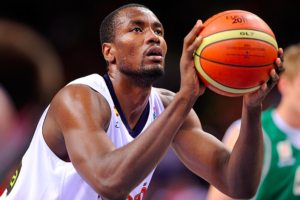
The Nature Lover: Serge Ibaka
Serge Ibaka, known for his prowess on the basketball court, is also a passionate nature lover. Here’s a closer look at his deep connection with the natural world:
1. African Roots: Serge Ibaka was born in the Republic of the Congo, where he developed a profound appreciation for the beauty and diversity of the African landscape. His upbringing instilled in him a deep respect for nature and wildlife.
2. Conservation Efforts: Ibaka is actively involved in conservation efforts, particularly in Africa. He has been a vocal advocate for protecting endangered species and preserving natural habitats. He uses his platform to raise awareness about environmental issues.
3. Safari Enthusiast: Ibaka is known to enjoy safaris and has shared his experiences exploring the African wilderness on social media. His love for wildlife and adventure is evident in the photos and videos he shares from his trips.
4. Environmental Activism: Ibaka’s passion for nature extends to his everyday life. He promotes sustainable living practices and advocates for eco-friendly initiatives. He is committed to reducing his carbon footprint and encourages others to do the same.
5. Wildlife Photography: Ibaka has a keen interest in wildlife photography and often captures stunning images of animals in their natural habitats. His photos showcase the beauty of the natural world and highlight the importance of conservation.
6. Nature Retreats: Despite his busy basketball schedule, Ibaka makes time to retreat into nature. He finds solace and inspiration in the outdoors, often sharing moments of tranquility and reflection with his followers.
7. Nature Conservation Projects: Ibaka is involved in various nature conservation projects, including tree planting initiatives and wildlife protection programs. He believes in the importance of taking action to preserve the environment for future generations.
8. Educating Others: Ibaka uses his platform to educate others about the importance of nature conservation. He believes that by raising awareness and inspiring others to take action, we can make a positive impact on the planet.
9. Personal Connection: For Ibaka, nature is more than just a hobby; it’s a way of life. He feels a deep personal connection to the natural world and is committed to doing his part to protect it.
10. Inspiring Others: Ibaka’s love for nature is inspiring. He shows that no matter where you come from or what you do, anyone can make a difference in the fight to preserve our planet’s natural beauty.
Conclusion
In conclusion, the off-court eccentricities of basketball stars add depth and intrigue to their personalities. Whether they’re gentle giants, artistic souls, music maestros, nature lovers, or comedy kings, these players show that there’s more to them than just basketball. Their unique traits and passions make them fascinating individuals both on and off the court.
Furthermore, basketball stars are not just athletes; they are complex individuals with unique personalities and interests. From the introverted genius of Kawhi Leonard to the comedic genius of Blake Griffin, these players show that there is more to them than meets the eye. Their off-court lives reveal a diverse range of talents and passions, from art and music to comedy and philanthropy.
By exploring the personal lives of these players, we gain a deeper appreciation for their contributions both on and off the court. Whether they are dominating the game or making us laugh, these basketball stars continue to inspire and entertain us with their remarkable talents and personalities.
Frequently Asked Questions (FAQs)
What is Boban Marjanovic known for off the court?
Boban Marjanovic is known for his gentle and lovable personality off the court.
Besides basketball, what artistic pursuits does Chris Bosh pursue?
Chris Bosh pursues various artistic pursuits, including painting and photography.
What is Damian Lillard known for besides basketball?
Damian Lillard is known for his music career under the name Dame D.O.L.L.A.
What is Serge Ibaka passionate about off the court?
Serge Ibaka is passionate about nature and wildlife off the court.
Besides basketball, what other talent does Blake Griffin have?
Blake Griffin has ventured into stand-up comedy off the court.
Which basketball star is known for his quiet demeanor?
Kawhi Leonard is known for his quiet demeanor off the court.
Who is considered a fashion icon among NBA players?
Russell Westbrook is considered a fashion icon for his bold fashion choices.
Which player is known for his intellectual curiosity and philosophical musings?
Kyrie Irving is known for his intellectual curiosity and philosophical musings off the court.
Apart from basketball, what other endeavors is LeBron James involved in?
LeBron James is involved in various endeavors, including producing films and opening a school for at-risk youth.
Who is known for his playful personality and offbeat sense of humor?
JaVale McGee is known for his playful personality and offbeat sense of humor off the court.
Basketball
Clark and Reese Make WNBA All-Star Team in Debut Season
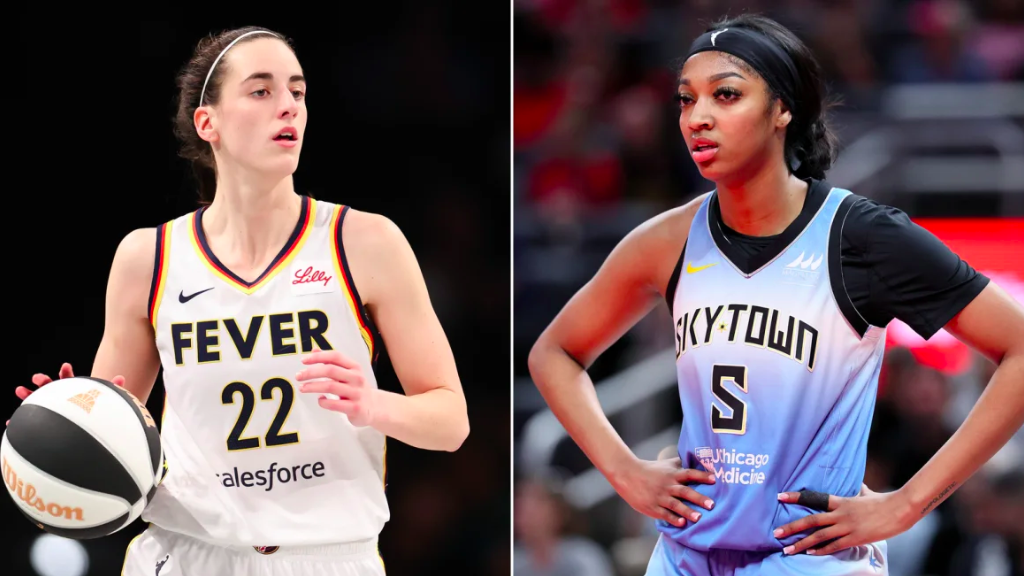
Clark and Reese Make WNBA All-Star Team in Debut Season
The WNBA has long been a platform showcasing the incredible talent and athleticism of women basketball players. This year, the league has seen an infusion of young talent, with rookies Caitlin Clark and Angel Reese making significant waves.
Their remarkable performances have earned them spots on the prestigious WNBA All-Star team, a testament to their skills, dedication, and impact on the game. This article delves into the journey of these two phenomenal athletes, their achievements, and what their inclusion in the All-Star team means for the future of women’s basketball.
The Journey of Caitlin Clark
Early Life and Background
Caitlin Clark’s journey to becoming an All-Star began in West Des Moines, Iowa. From a young age, Clark exhibited a natural talent for basketball, which was nurtured by her supportive family and dedicated coaches.
High School Achievements
Clark attended Dowling Catholic High School, where she quickly became a standout player. Her scoring ability and court vision set her apart, leading her team to numerous victories and earning her national recognition. She was named a McDonald’s All-American, solidifying her status as one of the top high school players in the country.
College Dominance at Iowa
Clark chose to play college basketball at the University of Iowa, where she continued to impress. Her freshman year was nothing short of spectacular, as she led the nation in scoring and earned numerous accolades, including Big Ten Freshman of the Year. Her dynamic playing style and ability to perform under pressure made her a must-watch player.
The Rise of Angel Reese
Early Beginnings
Angel Reese’s path to the WNBA began in Baltimore, Maryland. Like Clark, Reese showed early promise on the basketball court. Her competitive spirit and drive were evident from the start.
High School Success
Reese attended St. Frances Academy, where she became one of the most dominant players in high school basketball. She led her team to multiple championships and was named a McDonald’s All-American. Her versatility and tenacity on the court made her a top recruit for college programs across the country.
College Career at Maryland
Reese committed to the University of Maryland, where she continued to excel. Her impact was immediate, as she helped lead the Terrapins to numerous victories and earned several individual awards. Her defensive prowess and scoring ability made her a force to be reckoned with.
Making Their Mark in the WNBA
Transition to the Professional League
The transition from college to the professional league is challenging, but both Clark and Reese have made it look seamless. Their skills, work ethic, and competitive nature have allowed them to quickly adapt to the WNBA’s fast-paced environment.
Early Season Highlights
In their rookie seasons, both players have had numerous standout moments. Clark’s scoring ability and playmaking skills have made her a key player for her team, while Reese’s defensive prowess and versatility have been crucial for her squad.
Earning All-Star Honors
The WNBA All-Star selection is a significant achievement for any player, but earning it as a rookie is particularly impressive. For Clark and Reese, this honor is a testament to their hard work, talent, and the impact they’ve had on the league in such a short time.
The Impact of Their Achievements
Inspiring the Next Generation
Clark and Reese’s success is inspiring young athletes across the country. Their journeys highlight the importance of dedication, hard work, and believing in oneself. They serve as role models for aspiring basketball players, showing that dreams can be achieved with perseverance and passion.
Shaping the Future of the WNBA
Their inclusion in the All-Star team signifies a bright future for the WNBA. As the league continues to grow, the emergence of talented rookies like Clark and Reese ensures that the quality of play remains high and that fans will be treated to exciting basketball for years to come.
Conclusion
Caitlin Clark and Angel Reese’s selection to the WNBA All-Star team is a remarkable achievement that underscores their talent and hard work. Their journeys from high school standouts to college stars and now professional athletes serve as an inspiration to many. As they continue to make their mark in the WNBA, their influence on the game and the next generation of players will undoubtedly be significant.
Frequently Asked Questions (FAQs)
What makes Caitlin Clark and Angel Reese standout rookies in the WNBA?
Caitlin Clark and Angel Reese are standout rookies due to their exceptional skills, competitive nature, and significant impact on their teams. Clark’s scoring ability and playmaking skills, combined with Reese’s defensive prowess and versatility, set them apart in the league.
How did Caitlin Clark’s college career prepare her for the WNBA?
Caitlin Clark’s college career at the University of Iowa prepared her for the WNBA by allowing her to compete at a high level and develop her skills. Leading the nation in scoring and earning multiple accolades gave her the confidence and experience needed to excel in the professional league.
What are some of Angel Reese’s notable achievements in her rookie season?
In her rookie season, Angel Reese has been a key defensive player for her team and has shown versatility on the court. Her ability to guard multiple positions and contribute to her team’s success has been widely recognized, earning her All-Star honors.
How do Caitlin Clark and Angel Reese inspire young athletes?
Caitlin Clark and Angel Reese inspire young athletes by demonstrating that hard work, dedication, and passion can lead to success. Their journeys highlight the importance of perseverance and believing in oneself, serving as role models for aspiring basketball players.
What is the significance of their All-Star selection for the future of the WNBA?
Their All-Star selection signifies a bright future for the WNBA, as it showcases the emergence of talented young players who will continue to elevate the league. Clark and Reese’s success ensures that the quality of play remains high and that fans can look forward to exciting basketball for years to come.
References: CNN Article
Basketball
Angel Reese Goes Viral After Posting Picture With Caitlin Clark
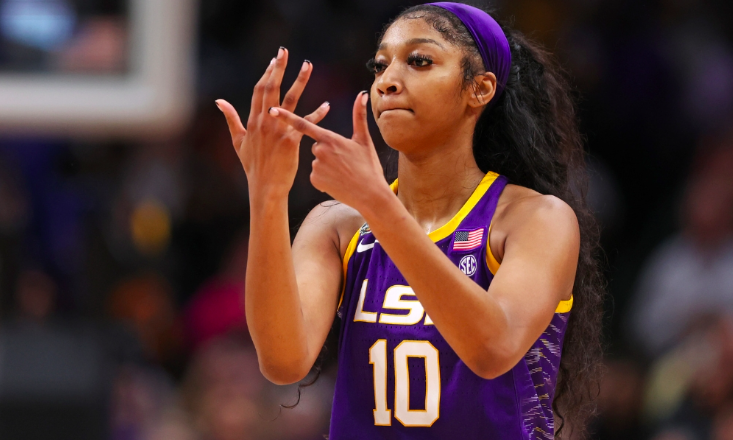
Angel Reese Goes VIRAL After Posting Picture With Caitlin Clark
In the world of sports, viral moments often emerge unexpectedly, capturing the attention of fans and media alike. One such moment recently involved Angel Reese and Caitlin Clark, two standout athletes whose recent photo together sparked a wave of excitement across social media. In this article, we delve into the details behind this viral sensation, exploring the impact of their friendship and the significance of their careers.
The Rise of Angel Reese
Early Life and Background
Angel Reese’s journey to stardom began in Baltimore, Maryland, where she was born and raised. Her passion for basketball was evident from a young age, and she quickly became a standout player in high school.
High School Achievements
During her high school career, Reese played for St. Frances Academy, where she led her team to multiple championships. Her impressive stats and leadership on the court earned her numerous accolades, including being named a McDonald’s All-American.
College Career at Maryland
Reese’s talent caught the attention of top college programs, and she eventually committed to the University of Maryland. At Maryland, she continued to excel, becoming a key player for the Terrapins. Her performance on the court and her charismatic personality off it made her a fan favorite.
Caitlin Clark: A Star in Her Own Right

Early Beginnings
Caitlin Clark’s rise to fame began in West Des Moines, Iowa. Like Reese, she showed a natural talent for basketball early on, and her skills were honed through years of dedication and hard work.
High School Stardom
Clark attended Dowling Catholic High School, where she established herself as one of the top players in the nation. Her scoring ability and court vision set her apart, earning her numerous awards and recognition.
Dominance at Iowa
Clark chose to play college basketball at the University of Iowa, where she quickly became one of the most exciting players in the NCAA. Her ability to score from anywhere on the court and her competitive spirit made her a standout player and a household name.
The Viral Moment
The Picture That Broke the Internet
The viral moment in question occurred when Angel Reese posted a picture of herself with Caitlin Clark on social media. The photo, which showed the two athletes smiling and posing together, quickly gained traction and went viral.
Social Media Reactions
Fans and fellow athletes were quick to react to the photo. Comments and shares flooded in, with many praising the friendship between the two players and expressing excitement about their future careers.
Media Coverage
The media also took notice, with sports outlets and news organizations covering the story. Articles and segments highlighted the significance of the photo, emphasizing the impact of their friendship on the sports community.
The Significance of Their Friendship
Bridging Rivalries
One of the reasons the photo went viral was the perceived rivalry between Reese and Clark. Both players are known for their competitive nature, and their teams have faced off in intense matchups. The photo served as a reminder that, despite on-court rivalries, athletes can share mutual respect and camaraderie.
Empowering Female Athletes
The photo also resonated because it showcased two successful female athletes supporting each other. In a sports world often dominated by male narratives, the friendship between Reese and Clark highlighted the importance of female athletes uplifting one another.
The Impact on Their Careers
Increased Popularity
The viral photo brought even more attention to Reese and Clark, boosting their popularity and expanding their fan bases. Both players saw increases in their social media followings and received endorsements and sponsorships as a result.
Future Collaborations
There is speculation that the friendship between Reese and Clark could lead to future collaborations, both on and off the court. Fans are excited about the potential for joint ventures, such as charity events or training camps.
Conclusion
The viral photo of Angel Reese and Caitlin Clark is a testament to the power of sports to bring people together. It highlights the importance of friendship and mutual respect among athletes, even in the face of intense competition. As both players continue to excel in their careers, their friendship will undoubtedly inspire fans and fellow athletes alike.
Frequently Asked Questions (FAQs)
How did Angel Reese and Caitlin Clark become friends?
Angel Reese and Caitlin Clark became friends through their mutual respect for each other’s skills and competitive spirit. Their paths crossed frequently in the basketball world, leading to a strong bond.
What impact did the viral photo have on their careers?
The viral photo significantly boosted their popularity, leading to increased social media followings, endorsements, and media coverage. It also highlighted their influence as female athletes.
Will Reese and Clark collaborate on any projects in the future?
While there is no official confirmation, there is speculation that their friendship could lead to future collaborations, such as charity events, training camps, or joint ventures.
How did fans react to the viral photo?
Fans reacted positively to the viral photo, praising the friendship between Reese and Clark. The photo received thousands of likes, comments, and shares, with many expressing excitement about their future careers.
What message does the friendship between Reese and Clark send to other athletes?
The friendship between Reese and Clark sends a message of camaraderie and mutual respect. It shows that athletes can support each other and build strong bonds, even in the face of intense competition.
Basketball
Beyond the Bucket: Unveiling the Magic of Assist Percentage in Basketball

Beyond the Bucket: Unveiling the Magic of Assist Percentage in Basketball
Basketball is a beautiful ballet of athleticism, strategy, and teamwork. While thunderous dunks and clutch buzzer-beaters steal the spotlight, a crucial element often goes unnoticed: the art of the assist. A well-timed pass that sets up a teammate for an easy basket is a thing of beauty, and the metric that captures this playmaking prowess is assist percentage.
For statisticians and basketball aficionados alike, understanding assist percentage unlocks a deeper appreciation for the game’s intricate web of passing and scoring. This comprehensive guide will delve into the world of assist percentage, explaining what it is, how it’s calculated, and why it’s a valuable tool for evaluating basketball players.
Dissecting the Assist: What Exactly Is It?
In basketball, an assist is credited to a player who passes the ball to a teammate in a way that directly leads to a successful field goal (excluding free throws). It’s the unselfish act of creating an advantageous scoring opportunity for another player. Imagine a dazzling no-look pass slicing through the defense, or a perfectly timed alley-oop that ends in a thunderous dunk – both scenarios would likely result in assists being credited.
However, only one assist can be awarded per made field goal, even if multiple players handle the ball before the scorer receives it. The official scorer determines who initiated the scoring play and made the pass that directly led to the basket.
Demystifying the Math: How is Assist Percentage Calculated?
Assist percentage (AST%) is a statistic that measures the frequency with which a player contributes to his team’s made field goals through assists. It’s expressed as a percentage and calculated using the following formula:
(Assists / (Field Goals Made by Team – Player’s Field Goals Made)) x 100
Here’s a breakdown of the formula:
- Assists: This refers to the total number of assists a player has recorded throughout a specific timeframe (game, season, career).
- Field Goals Made by Team: This represents the total number of field goals the player’s team has made during the same timeframe.
- Player’s Field Goals Made: This subtracts the player’s own field goals from the team’s total, ensuring the assist percentage focuses solely on passes that led to baskets by other players.
- x 100: This multiplies the result by 100 to convert it into a percentage.
For instance, if a player has 7 assists in a game where his team makes 30 field goals (excluding his own), their assist percentage for that game would be:
(7 assists / (30 field goals – player’s field goals)) x 100 = (7 / 23) x 100 = 30.4%
Unlocking Insights: Why is Assist Percentage Important?
Assist percentage goes beyond simply recognizing flashy passes. It sheds light on a player’s:
- Playmaking Ability: A high assist percentage indicates a player’s talent for creating scoring opportunities for teammates. They excel at finding open players and initiating the offense.
- Teamwork and Unselfishness: Assists showcase a player’s willingness to prioritize the team’s success over personal scoring.
- Court Vision: Players with high assist percentages possess exceptional court vision, allowing them to anticipate teammate movements and deliver pinpoint passes.
- Offensive System Fit: A player’s assist percentage can be influenced by the team’s overall offensive scheme. Teams that emphasize ball movement and backdoor cuts will naturally see higher assist percentages compared to teams focused on isolation plays.
By analyzing assist percentage alongside other metrics like points per game or player efficiency rating, coaches and analysts gain a more comprehensive understanding of a player’s overall contribution to the team.
Beyond the Averages: Interpreting Assist Percentage
While a high assist percentage is generally desirable, it’s crucial to consider context when interpreting this statistic. Here are some factors to keep in mind:
- Position: Point guards, by nature of their role as primary ball handlers, tend to have higher assist percentages compared to centers or power forwards.
- Pace of Play: Teams with a faster tempo and more possessions will naturally generate more assists compared to slower-paced teams.
- Usage Rate: Players with a high usage rate, meaning they handle the ball more frequently, will have more opportunities to rack up assists.
Therefore, a direct comparison of assist percentages between players in different positions or on different teams might not be entirely accurate. It’s essential to consider these contextual factors for a more nuanced evaluation.
Legends of the Dimes: Iconic Assist Men in Basketball History
Throughout basketball history, several players have cemented their legacies as legendary facilitators, weaving magic on the court with their pinpoint passes and unmatched court vision. Here are a few iconic “assist men” who redefined the art of playmaking:
- John Stockton: Widely considered the greatest passer of all time, John Stockton’s name is synonymous with assists. Playing alongside the dominant Karl Malone for the Utah Jazz, Stockton holds the NBA record for career assists (15,806) and assist average per game (10.5). His no-look passes and uncanny ability to find open teammates were a marvel to behold.
- Magic Johnson: Earvin “Magic” Johnson was a magician on the court, living up to his nickname with his dazzling passes and infectious enthusiasm. A five-time NBA champion with the Los Angeles Lakers, Magic revolutionized the point guard position with his exceptional size, passing ability, and leadership. His no-look passes and alley-oop connections with Kareem Abdul-Jabbar were legendary.
- Chris Paul: Modern-day maestro Chris Paul continues to orchestrate offenses with his pinpoint passing and floor generalship. A ten-time All-Star and future Hall of Famer, Paul’s impact goes beyond scoring, with his ability to elevate teammates and control the tempo of the game. His hesitation dribbles, behind-the-back passes, and anticipation of defensive rotations make him a nightmare for opposing teams.
- Isiah Thomas: Nicknamed “The Zeke” for his relentless playing style, Isiah Thomas was the heart and soul of the Detroit Pistons’ “Bad Boys” teams of the 1980s. While known for his toughness on defense, Thomas was also a gifted passer, leading the league in assists per game four times in his career. His ability to penetrate and dish, along with his clutch shooting, made him a complete offensive threat.
- Oscar Robertson: The “Big O,” Oscar Robertson, was a force of nature on the court, averaging a triple-double (points, rebounds, assists) for an entire season – a feat never replicated since. His well-rounded skillset included elite passing ability, and he retired as the NBA’s career leader in triple-doubles (181). His vision and passing prowess made him a dominant force throughout the 1960s.
These are just a few examples, and the history of basketball is littered with incredible passers who have left their mark on the game. From Jason Kidd’s defensive disruption and transition passing to Steve Nash’s dazzling ball-handling and innovative passing angles, the art of the assist continues to evolve.
Beyond Assists: A Look at Advanced Playmaking Metrics
While assist percentage remains a valuable tool, the world of basketball analytics is constantly pushing the boundaries. Here are some advanced metrics that delve deeper into a player’s playmaking ability:
- Potential Assists: This metric estimates the number of passes that would have resulted in assists if teammates had converted their shots.
- Pass Accuracy: This measures the percentage of a player’s passes that reach their intended target.
- Secondary Assists: This tracks passes that lead to an assist, essentially highlighting a player’s role in setting up the scoring opportunity.
By incorporating these advanced metrics alongside assist percentage, analysts gain a more comprehensive picture of a player’s overall impact as a facilitator.
Dimes for Days: Tips to Improve Your Assist Percentage
Whether you’re a seasoned baller or just starting out, here are some tips to elevate your passing game and potentially boost your assist percentage:
- Develop Your Court Vision: Constantly scan the court, anticipating teammate movements and potential scoring opportunities.
- Sharpen Your Passing Skills: Practice different types of passes – chest passes, bounce passes, no-look passes – to become a well-rounded facilitator.
- Prioritize Unselfishness: Look for the open teammate over forcing a bad shot. A well-timed pass can be more valuable than a contested attempt.
- Master the Pick-and-Roll: The pick-and-roll remains a fundamental offensive weapon. Learn to read defenses and make the right decisions, whether it’s dishing to the roller or kicking the ball out to an open shooter.
- Communicate Effectively: Verbal communication is key. Let your teammates know where you are and what you see on the court, allowing them to anticipate your passes.
By honing these skills and incorporating them into your game, you can become a more effective playmaker and potentially see your assist percentage rise.
The Final Buzzer: The Enduring Value of Assists
In conclusion, assist percentage is a valuable metric that sheds light on a player’s ability to create scoring opportunities for teammates. It goes beyond personal scoring statistics and highlights a player’s unselfishness, court vision, and overall contribution to the team’s offensive success.
While not the sole measure of a player’s worth, assist percentage, when considered alongside other statistics and the context of the game, offers valuable insights for coaches, analysts, and even casual fans.
Frequently Asked Questions (FAQs)
To solidify your understanding of assist percentage, here are some frequently asked questions:
What is a “good” assist percentage in basketball?
There’s no single answer, as it depends on position and playing style. Point guards typically have higher assist percentages (think 8% or above), while forwards and centers will naturally have lower numbers.
Can a player with a low assist percentage still be a valuable contributor?
Absolutely! While a high assist percentage is desirable for some players, others excel in different areas like scoring or rebounding. A well-rounded team needs a variety of skillsets to succeed.
How do turnovers affect assist percentage?
Turnovers can indirectly impact assist percentage. A player who frequently turns the ball over will have fewer opportunities to create scoring chances for teammates.
Is there an assist percentage equivalent for other sports?
Similar concepts exist in other sports, like hockey’s “assists” statistic or American football’s “completion percentage” for quarterbacks. However, the calculations and interpretations differ based on the specific sport’s mechanics and scoring system.
How will assist percentage evolve in the future?
As basketball analytics continues to develop, we might see even more advanced metrics emerge to evaluate playmaking ability. However, assist percentage is likely to remain a core statistic for understanding and appreciating the art of the pass in basketball.
By understanding assist percentage and its intricacies, you’ll be better equipped to analyze basketball games, appreciate the contributions of different players, and engage in more informed discussions about the beautiful sport we all love. So, keep your eyes peeled for those no-look dimes, dazzling alley-oops, and the next generation of legendary “assist men” who continue to redefine the art of the pass.
-

 NBA5 months ago
NBA5 months agoLaMelo Ball Net Worth: A Comprehensive Look at the NBA Star’s Financial Empire
-

 Football6 months ago
Football6 months agoEuro 2024: Alvaro Morata Speaks Out About ‘No Respect’ in Spain
-

 Football7 months ago
Football7 months agoMeet the World Football Celebrities and Their Stories
-

 Game6 months ago
Game6 months agoThe Ultimate Guide to General Multi-Sport Events
-

 Football7 months ago
Football7 months agoSamuel Eto’o: Legendary Cameroonian Soccer Star’s Career
-

 Football6 months ago
Football6 months agoRonaldo’s Business Ventures and Investments (CR7 Brand)
-

 Wrestling4 months ago
Wrestling4 months agoKevin Owens: The Prizefighter’s Rise to Fame and Fortune
-

 Wrestling3 months ago
Wrestling3 months agoJey Uso Biography and Net Worth: The Rise of a WWE Superstar

